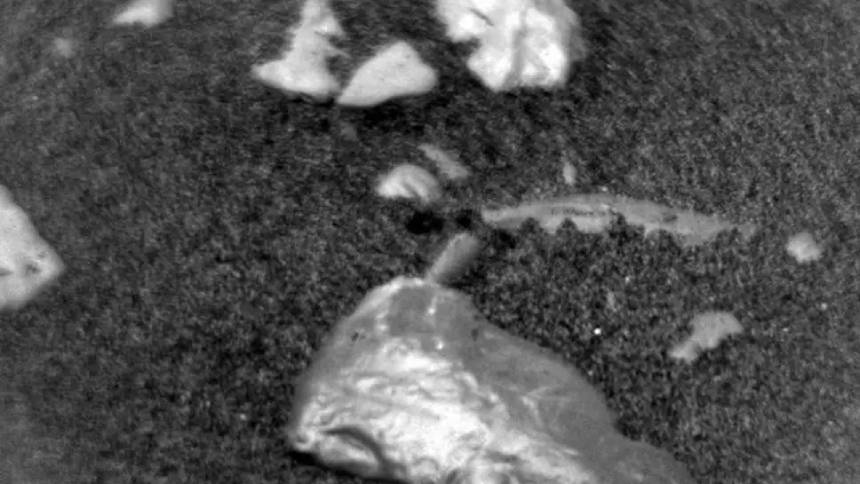According to foreign media reports, NASA’s “Curiosity” rover is investigating a strange “golden rock” on Mars. Scientists previously found this rock in a large-scale photo and named it “Little Colonsai”. “Little Colonsai is one of the rock samples we want to observe further.” NASA introduced that the researchers believe it may be is a meteorite because it is very bright, but only the chemical composition can be used as evidence. Unfortunately due to its small size, we missed this target on our last attempt, and Curiosity will try again using the data collected last time. Operators will use the “Chemical Composition Camera” (ChemCam) on Curiosity to study the rock.
ChemCam fires a laser beam from a distance, hits Martian rock or soil, and analyzes the elemental composition of the hit part (less than 1 millimeter in diameter) of the vapor. The spectrometer aboard Curiosity measures the composition of the laser-generated plasma, which yields detailed information about the rock’s mineralogy and microstructure. Curiosity has been working in the Vera Rubin Ridge area, investigating a unique piece of grey bedrock called Highfield. There are many rocks NASA wants to study, such as one called “Flanders Moss,” which has an interesting dark coating on its surface that requires chemical analysis to confirm its nature. If this “Little Cologne” is really a piece of metal, then no fuss.
Because “Curiosity” has repeatedly found suspected metal objects on Mars, including a small metal object similar to a robot finger, a small metal ball, a meteorite containing nickel iron, and another metal meteorite. Curiosity is currently traversing large rock structures that may have only formed in higher-energy environments, such as high winds or flowing streams. Wind or running water builds up sediments into gradually sloping formations, and as they harden into rock, they become large structures resembling ridges. This was discovered by Curiosity before.
